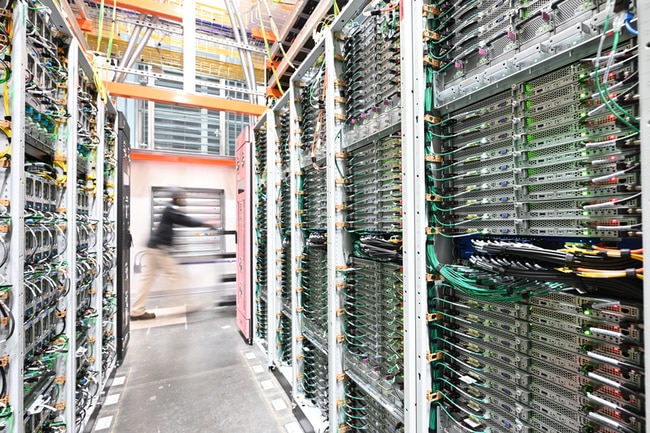Amazon reveals biggest problem with data centres as it makes a $13.2bn bet on Australia
Amazon is making a huge investment in its Australian cloud infrastructure as it tackles one of the biggest problems with data centres: power and water use.

Amazon is tackling one of the biggest problems with data centres: power and water use, as it invests about $13.2bn on its Australian cloud infrastructure in the next three years across the eastern seaboard.
The widespread adoption of artificial intelligence has fuelled demand for data centres that house the same computing firepower needed to mine bitcoin. But AI is yet to attract the same level of environmental scrutiny as the digital currency.
This is despite data centres using billions of litres of water each year to cool their powerful and expensive computers. Google alone uses 16.2 billion litres of water a year to cool its data centre fleet. To put this into context, a standard Olympic-size 50m swimming pool holds 2.5 million litres.
Amazon’s cloud computing subsidiary AWS does not disclose how much water its data centres use but says it will “return” more water to communities than it consumes by 2030.
It says it will do this in two ways: partnering with non-profit organisations to increase access to water and making its own cooling systems more efficient, as it expands its data centre “regions” in Sydney and Melbourne.
In Australia, this will involve returning about 32 million litres of water each year to the catchment area that supplies Sydney via a partnership with conservation group Greater Eastern Ranges.
Jenna Leiner, Asia-Pacific sustainability lead for AWS, said the two-year project would involve restoring the local environment in the Wollondilly Shire on the outer southwest fringe of Sydney to increase water quality and yield.
This includes removing weeds that sprang up after the Black Summer bushfires swept through the area four years ago.
“Weeds that spring up in the aftermath of fires … prevent growth of biodiverse habitats. They can consume larger quantities of water. So through that weed removal, we can really increase that water that flows through to the community,” Ms Leiner said.

Great Eastern Ranges chief executive Gary Howling said the program would also support local communities and wildlife, including threatened species such as the glossy black cockatoo, grey-headed flying fox, koala and platypus.
“A key objective of the project will be to not only provide immediate environmental, social and cultural benefits to the Wollondilly Shire and beyond, but also to build the resilience of our communities and wildlife in the face of future climate disasters,” Mr Howling said.
Energy and water availability have increasingly become a hurdle for data centre development, making it critical for Amazon and other tech giants to accelerate green projects. Singapore had a moratorium on data centre expansion because it did not have enough capacity to power both the data centres, industry and homes, but it was lifted in July.
It’s a problem Australia is struggling to solve. Businesses have criticised state governments for setting their own 2035 emissions reduction targets ahead of the commonwealth, arguing the haphazard approach will increase the risk of the electricity grid failing.
Meanwhile, the Albanese government expects AI to inject up to $600bn into the national economy by the end of the year.
But companies like Amazon are increasingly taking the lead over government. AWS has two data centre regions in Australia, in Sydney and Melbourne. It is investing $13.2bn in its Australian cloud infrastructure from 2023 to 2027.
While this is Amazon’s first water replenishment project in Australia, it has completed similar programs overseas, including one with The Rivers Trust in Britain to build two wetlands on a tributary of the Thames to improve the quality of one of London’s main water supplies.
But the environment projects are just one part of making data centres greener. Ms Leiner said a holistic approach was needed, and this started with the designs of the chips in its computers to make them more energy-efficient. Then there is the water cooling system itself. Amazon uses evaporative cooling which involves drawing hot air from outside, passing it through a filter and wet cooling pad to circulate cool air throughout the building.
Ms Leiner said this had made Amazon’s data centres more water-efficient, using less than one cup of water (190ml) to cool one kilowatt hour of IT load, compared with the industry average of about 1.8 litres for the same load.
“We have to think about both energy and water consumption. That really guides the strategy around these elements when we start looking at evaluating climate patterns, local water management availability opportunities to use sustainable water sources. So there’s a lot of due diligence that goes into both new and existing sites,” Ms Leiner said.








To join the conversation, please log in. Don't have an account? Register
Join the conversation, you are commenting as Logout